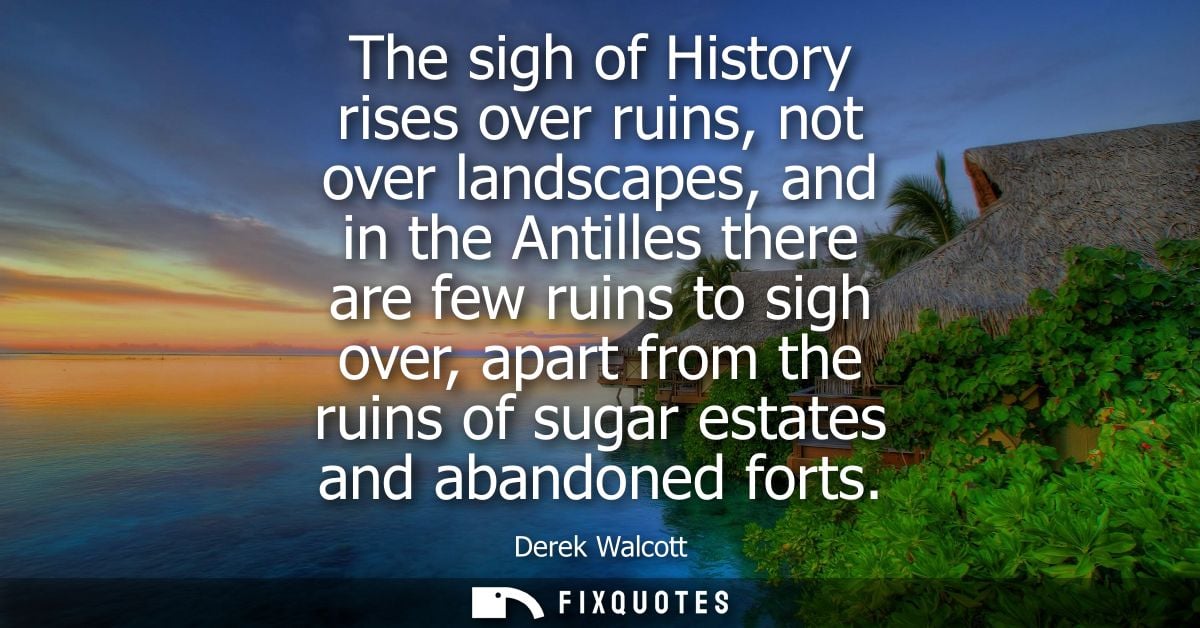"The sigh of History rises over ruins, not over landscapes, and in the Antilles there are few ruins to sigh over, apart from the ruins of sugar estates and abandoned forts"
About this Quote
Derek Walcott’s contemplation on history and ruins draws attention to the manner in which memory, identity, and historical narrative are linked to physical remnants of the past. He observes that history, in its emotional and reflective force, its “sigh”, tends to collect at the sites of visible ruins. Ruins serve as tangible markers of what has been lost, devastated, or transformed, allowing societies to mourn, remember, or mythologize their pasts. In much of the Western world, landscapes are dotted with the ruins of grand civilizations: temples, castles, coliseums, and monuments that trigger profound reflections on the progression and collapse of cultures.
Yet, in the Caribbean, specifically the Antilles, such classical ruins are remarkably scarce. The islands do not boast the kind of relics that conjure a romantic or tragic sense of ancient glory. Instead, their most notable ruins are those left by the colonial enterprises and their mechanisms: the sugar estates and forts. These are not simply decaying buildings, but haunting reminders of a violent and exploitative history, sites associated with slavery, colonial domination, and military oppression rather than with cultural grandeur. Through this juxtaposition, Walcott highlights a crucial difference in the historical consciousness of the Antilles. The lack of ruins akin to classical Europe’s alters the way history is experienced and commemorated; collective memory finds its anchors less in celebrated stone, and more in the traumatic vestiges of an imposed economic and social order.
Walcott’s reflection thus underlines how Caribbean history, lacking in romanticized ruins, is shadowed instead by the remnants of oppression. The implication is two-fold: first, that the region is deprived of the traditional materials for constructing a heroic narrative of the past, and second, that its landscape prompts a reckoning with the real, painful roots of its historical experience, demanding new forms of remembering and storytelling built on different, perhaps more honest, foundations.
More details
About the Author

